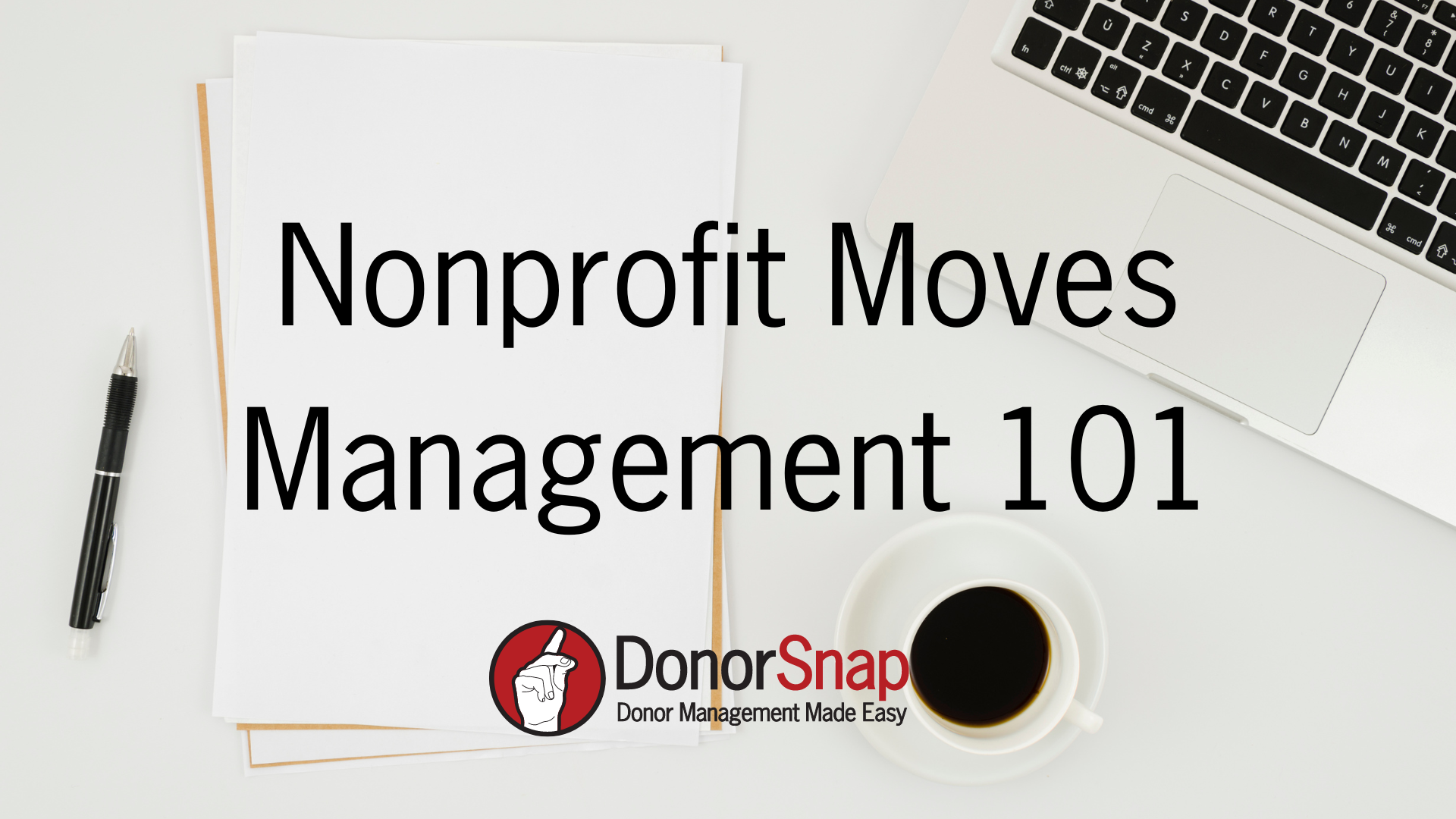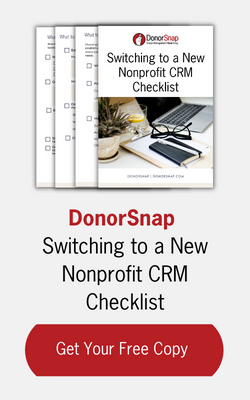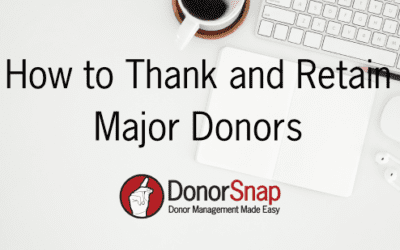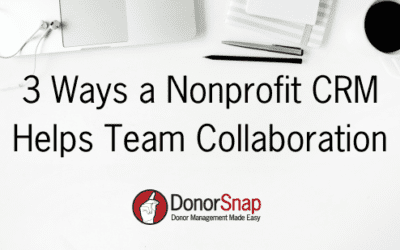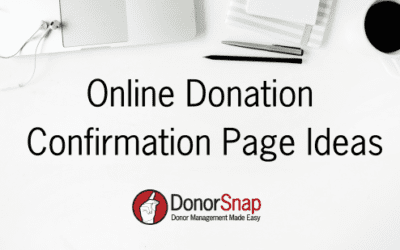Moves Management helps nonprofits sustain and cultivate donors at different stages of the donor life cycle. The process involves taking donors through various stages of giving by employing specific actions, commonly referred to as “moves,” that bring them to the next level. To better understand Moves Management, it is important to define the term and explore how to build a plan for it.
What is Moves Management?
Donors start as prospects and can become first-time donors, repeat donors, recurring donors, or major donors. However, donors cannot progress from one level to the next without some sort of engagement, which is where Moves Management comes in. Moves Management is all about donor cultivation and stewardship.
A move, in the context of Moves Management, is any touchpoint in which a donor interacts with a nonprofit, such as an email, phone call, or event. A Moves Management plan is the plan a nonprofit has in place to keep track of these moves in a cohesive way.
Building a Moves Management Plan
Moves Management plans will differ based on the giving level and the project. Nonprofits should create various plans for different projects and giving levels. To build a Moves Management plan, nonprofits should ask themselves a few questions:
- Why am I asking for money? Is this a capital campaign, annual fund, recurring giving program, or something else?
- Who am I asking? What segment of your contacts will I ask for this money?
- How will I ask? What is the appropriate method to ask donors for money? Will it be a print appeal, personalized move like a phone call, event, or lunch?
Scenarios for Using Moves Management
Moves Management can be used at any point in the donor-giving life cycle. However, the plans will differ based on the scenario. Some common scenarios include sustaining existing donors, sustaining first-time donors, or getting major donors to contribute to a capital campaign. Each scenario requires a different Moves Management plan.
Sustaining Existing Donors with Moves Management
It is widely known that it costs less money to retain current donors than to acquire new ones. In fact, it can be several years before nonprofits break even on dollars raised versus dollars spent on donor outreach. Therefore, sustaining existing donors offers a great financial benefit to nonprofits. It is important to keep existing donors engaged with your organization and a moves management plan in place can help you do this.
To effectively keep existing donors engaged you need to do more than just send them a thank you letter with a receipt. A moves management plan will help you continue to engage them with news and updates, personal stories, phone calls, etc.
The following is an example of a Moves Management plan for sustaining existing donors:
- Two general appeals to all contacts
- Quarterly newsletters with personal stories about the organization
- A follow-up phone call from a board member after a $100 or more donation
- Twice a year communication with lapsed donors
- Targeted mailing to consistent donors asking them to become recurring donors
Using Moves Management for a Large Capital Project
Moves Management is essential for large capital projects because it helps keep donors engaged and committed to the project. Capital projects can span many years, so it is essential to keep donors informed and engaged along the way.
Let’s assume you need to raise $3 million dollars for a new building at your nonprofit. Establishing the $3 million need is the first step, but you need to break down how much you need at various times. Do you need $1 million each year? Do you need a larger chunk at the beginning of the campaign to get you started? This will help you develop your plan of how many moves you need to fulfill your goal.
Current major donors make great candidates for capital project donors. Start by identifying who you want to contact and how you will contact them. It is also worth exploring if you will need to find new donors for this project. Can you create an incentive to give by offering naming opportunities for the highest donor?
The following is an example of a Moves Management plan for a multi-year capital project:
- Two large-scale fundraising events each year
- One major donor ask per year (excluding those that have already given)
- Follow-up mailings post major gift
- Two general appeals each year to all contacts
- Yearly meet-and-greet events with the board
- Tours of the building during construction
Sustaining First-Time Donors with Moves Management
The goal of sustaining a new donor is to move them to becoming a repeat donor. While you should employ the steps to maintain existing donors, with first-time donors, there are additional things you need to do. New donors have a much lower retention rate than repeat donors, so having a moves management plan in place to steward them is essential.
A warm welcome is key to retaining new donors. This could be anything from a welcome packet with information on your board, to an automated welcome email series, or a phone call from a board member.
The following is an example of a Moves Management plan for sustaining first-time donors:
- A welcome packet sent in the mail with the current annual report and a t-shirt
- Handwritten letter from board member
- Automated welcome email series sent over 5 months
- New donor shout-out in Newsletter
- Invite to annual donor appreciation event
How Your Nonprofit CRM Can Help with Moves Management
Once you have your moves management plans in place, you can turn to your CRM to help you out. By doing this, you will be able to easily manage every part of moves management, from segmenting your lists to automating messages and keeping detailed records of where a particular donor is in the cycle.
How to Use Segmentation in Moves Management
To implement an effective moves management plan, you should avoid using a one-size-fits-all approach. Instead, it’s important to segment and personalize your outreach and communication. DonorSnap can help you segment your donors based on any number of factors when building your moves management plan. This way, you can decide who you will be reaching out to based on the given scenario, such as major donors who have not yet given in the current fiscal year.
How to Use Automation for Moves Management
While personalized outreach and communication are important, some moves can be left to automation. By setting up a number of scenarios that will trigger an email campaign, you can save time and energy in the long run. DonorSnap allows you to set up a lapsed donor campaign or a new donor welcome series, and you can decide the messaging and frequency of the campaign. Once set up, DonorSnap will take care of the rest.
How to Effectively Track Moves with Your CRM
Keeping track of where a donor is in your moves management plan is crucial to its effectiveness. DonorSnap can help you keep track of all your moves management plans with features like the tickler reminder system, custom user-defined fields, and notes. The tickler system can be used to set up a detailed plan for a given donor, with the assignment of responsibility for tasks and automatic email reminders. The user-defined fields in DonorSnap can be used to create a tracking record to monitor where each key donor is in the cultivation process. And, keeping detailed notes for each contact allows multiple parties to be involved in the development process and provides a concise record of conversations and visits with the Contact.
Final Thoughts
Moves management is an important tool for nonprofits to shepherd donors toward various giving goals. Nonprofit CRM tools such as DonorSnap can help to effectively manage moves management through best practices like segmentation, automation, and keeping detailed records. By using moves management effectively, nonprofits can retain current donors, sustain first-time donors, and get major donors to contribute to capital campaigns, ultimately leading to greater success in their fundraising efforts. Investing in a nonprofit CRM like DonorSnap can help nonprofits handle their moves management effectively and build strong relationships with their donors.
